If it wasn’t for his fatal accident in the 1994 Italian Grand Prix, Ayrton Senna would be 63 years old today. Who knows where his Formula 1 career would have taken him? How many more wins would he have and what F1 records would he still hold today?
Nonetheless, the Brazilian left an incredible legacy. In just over a decade at open-wheel racing’s highest level, Senna amassed 65 pole positions, 41 victories, and numerous legendary drives. How do we narrow it down to his five best? With great difficulty.
5. Japanese Grand Prix 1988
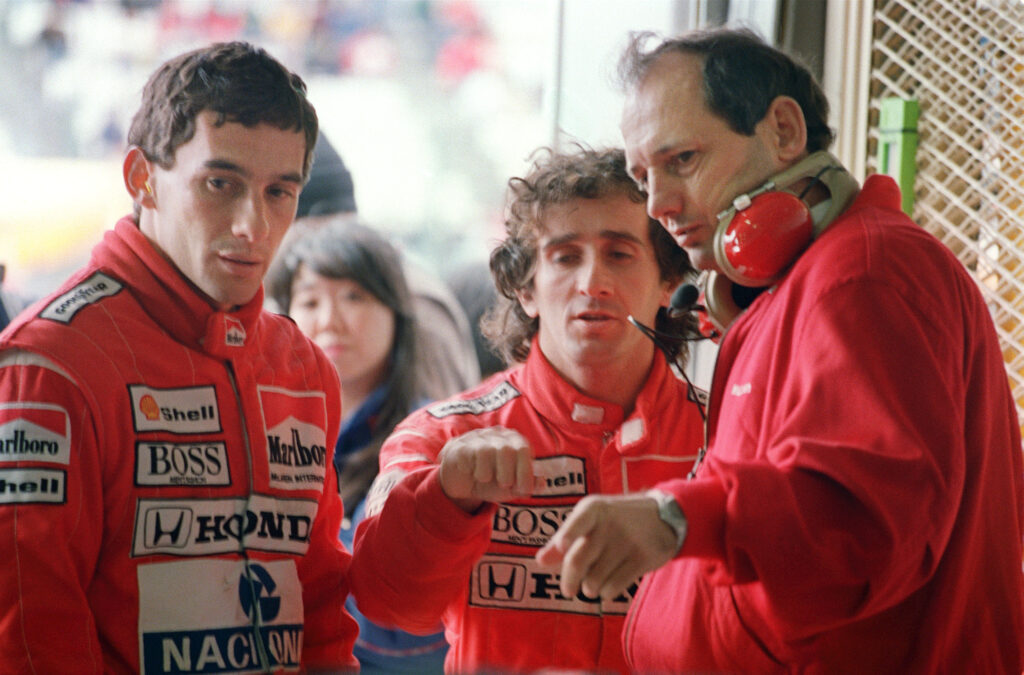
Marlboro McLaren Honda teammates Brazilian Ayrton Senna (L) and French Alain Prost (C) confer with a team staff member during qualifying. (Photo by KAZUHIRO NOGI/AFP/GettyImages)
Up until 1988, Senna had shown flashes of mastery, but was never able to put a full season together. Ahead of the season finale at Suzuka, he stood at the brink of his first F1 title. All Senna needed to do was win the Japanese Grand Prix. Easy, right?
Things got off to a rough start. Firing from the pole position, he nearly stalled the Honda V-6 in his McLaren Mp4/4. By the first corner, he had slipped to 14th place in the running order.
Those who watched the grand prix that day, witnessed one of the greatest comeback drives. Ever. Ayrton dispatched six cars in less than a lap, and by the time he came back around to the front stretch he was in eighth. By lap four, he was up to fourth.
Meanwhile, Senna’s championship rival—and McLaren teammate—Alain Prost was under pressure from Ivan Capelli in a March. Once Capelli faded, Senna inherited second place. It only took him another 10 laps to catch Prost and even less time to pass the championship hopeful. Momentum and adrenaline launched Senna past the Frenchman.
A light rain fell over the track in the final laps. It didn’t matter. Senna was on a mission. He stormed across the finish line, capturing his eighth win of the season and his first championship.
4. Monaco Grand Prix 1984
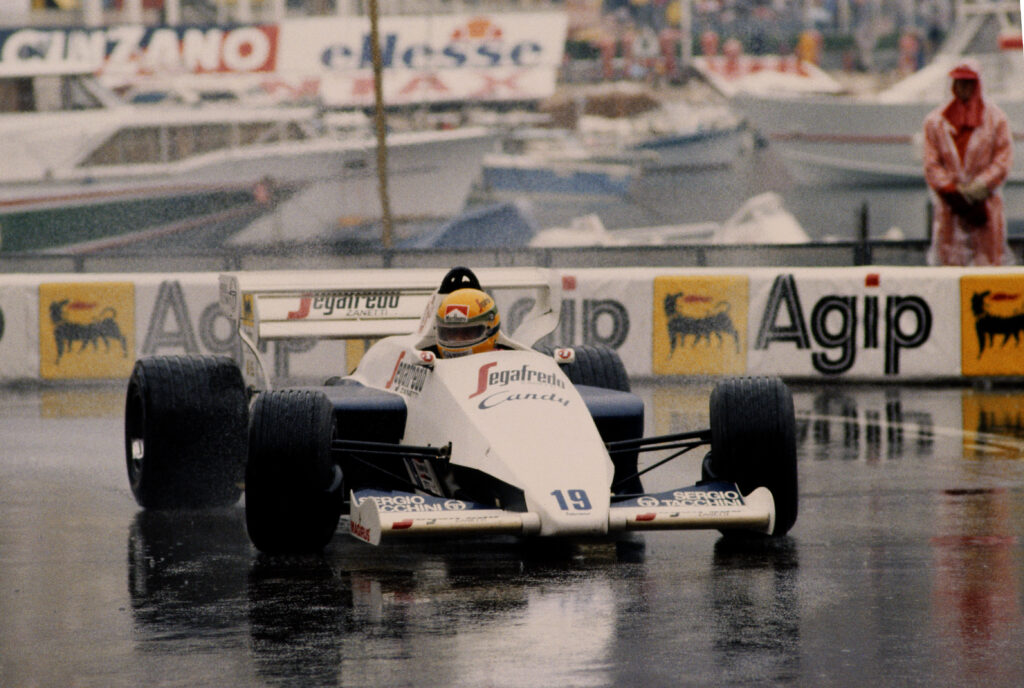
Ayrton Senna of Brazil drives the #19 Toleman-Hart TG184 in the rain to second place during the Grand Prix of Monaco. (Photo by Mike Powell/Getty Images)
Ok, so Senna didn’t win the 1984 Monaco Grand Prix. Rather than putting a notch in the win column, the Brazilian opened a few eyes to his brilliance in wet conditions.
Another race in the wet. Senna in only his sixth grand prix was driving the low-budget Toleman-Hart entry. He qualified 13th in dry conditions.
After 20 laps, his Candy-liveried ride was the quickest car on the track. Between laps 22 and 31, his gap to leader Alain Prost shriveled in the rain, dropping from 34 seconds to a meager seven. An upset was brewing.
On lap 32, Senna surged ahead of his Prost’s McLaren. Unfortunately, the race was terminated on the previous lap due to torrential showers.
If it weren’t for the stoppage, would Senna he have won? Perhaps. Stefan Bellof’s Tyrrell was closing him down on the duo when the race was called. And Senna’s Toleman had suspension damage that might not have lasted a full race. Even so, it was an eye-catching performance. Senna would make Monaco his personal playground, winning a six times at the street course, including five in a row from 1989 to 1993.
3. Brazilian Grand Prix 1991
- Ayrton Senna, Grand Prix of Brazil, Interlagos, 24 March 1991. (Photo by Paul-Henri Cahier/Getty Images)
- Ayrton Senna, McLaren-Honda MP4/6, Grand Prix of Brazil, Autodromo Jose Carlos Pace, Interlagos, Sao Paolo, 24 March 1991. (Photo by Paul-Henri Cahier/Getty Images)
In 1991, Senna claimed his third and final F1 world championship, driving a McLaren-Honda V12 that was inferior to its Williams-Renault rivals. The Brazilian Grand Prix, Senna’s home race, best encapsulated the season’s struggles.
Senna started from pole position and rocketed into the lead, initially fending off Nigel Mansell before his Williams car suffered gearbox trouble. As the race wore on, Senna began experiencing shifting trouble, too. First he lost fourth gear, followed by third, and then fifth.
As Ayrton started his final lap, he put the car in sixth gear and left it there. It meant he had no engine braking but at least he was still going and still in the lead.
As if thing couldn’t get any worse, it started to rain. And Senna was on slicks.
By time he crossed the line, Riccardo Patrese’s Williams had closed the gap to less to than three seconds. Still, Senna claimed a home grand prix win for the first time in his F1 career. Keeping his car straight amid the rain and gearbox issues had sapped so much energy from Senna that he had to be lifted from the cockpit to attend the podium ceremony.
2. Portuguese Grand Prix 1985
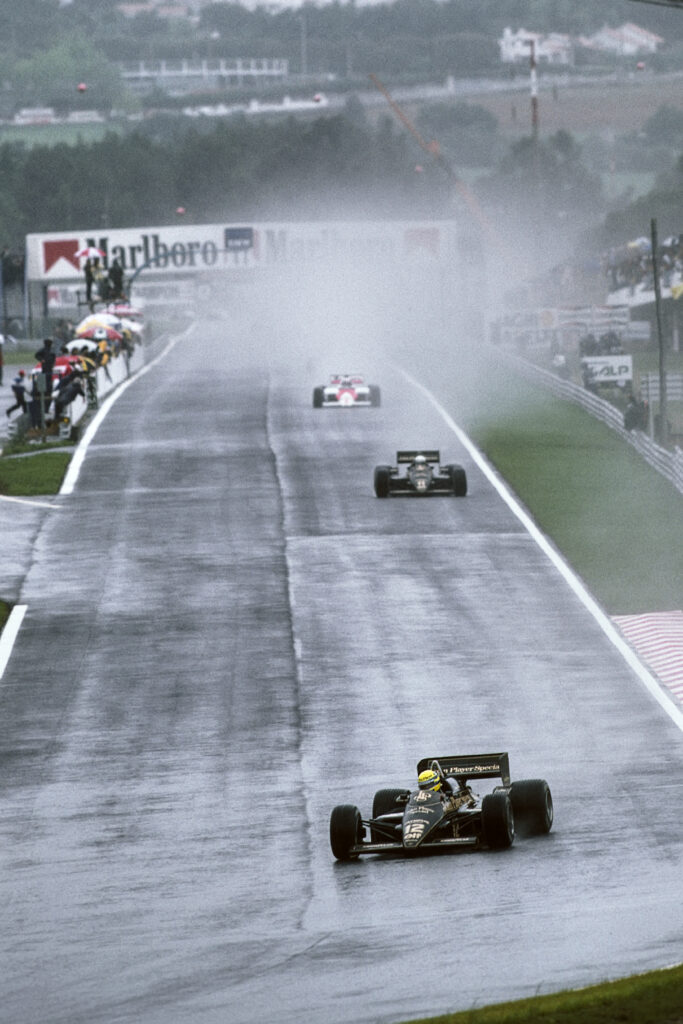
Ayrton Senna, Lotus-Renault 97T, Grand Prix of Portugal, Estoril, 21 April 1985. (Photo by Paul-Henri Cahier/Getty Images)
Senna’s first pole position came in only his second race for Lotus. In that era, Lotus was in its dying days as an F1 superpower. On that rainy day in Portugal, driving the iconic black-and-gold John Player Special machine, Senna simply drove away from the opposition.
As with many of his other wet weather performances, Senna was in his own zip code. By the finish, he was more than a minute ahead of second place Michele Alboreto in a Ferrari. The rest of the field was a lap down.
Unlike some of Senna’s drives in the wet, this was entirely undramatic. His self-assurance in the treacherous conditions made his rivals look ham fisted. Yet out of the car, he had the look of a man who had simply done what he’d expected.
The triumph in Portugal was Senna’s first F1 victory and a bellwether for future rain-soaked heroics.
1. European Grand Prix 1993
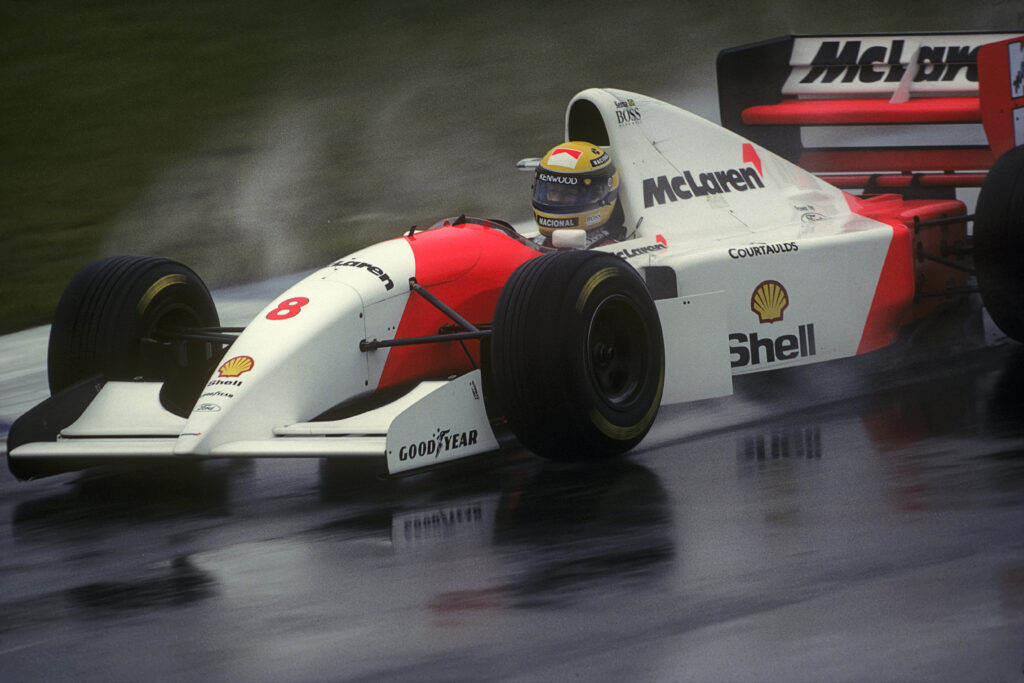
Ayrton Senna, McLaren-Ford MP4/8, Grand Prix of Europe, Donington Park, 11 April 1993. (Photo by Paul-Henri Cahier/Getty Images)
In 1993, the United Kingdom hosted two Formula 1 Grand Prix. The first race was held at the historic Donington Park in England. On a soaked track, Senna started fourth in an orange and white McLaren MP4/8. Even worse, he momentarily dropped a place after Michael Schumacher muscled him onto a curb in the first corner of the first lap.
Schumacher’s moved ruffled the Brazilian. Senna quickly dodged round Schumacher’s Benetton to take fourth, then scythed past Karl Wendlinger’s Sauber for third. Damon Hill’s Williams-Renault was Senna’s next victim followed by its sister car of Alain Prost. Four passes, one mesmerizing lap.
It was all the opposition saw of the McLaren man for the rest of the afternoon—unless, of course, he was lapping them. His team changed tires four times to suit the wet-dry weather and Senna almost lapped the entire field. The only driver to finish on the same lap was Damon Hill, who finished nearly two minutes behind.
It was a performance that made the world’s best drivers on the F1 grid look like complete amateurs.
Did we miss any of your favorites? Let us know in the comments below.

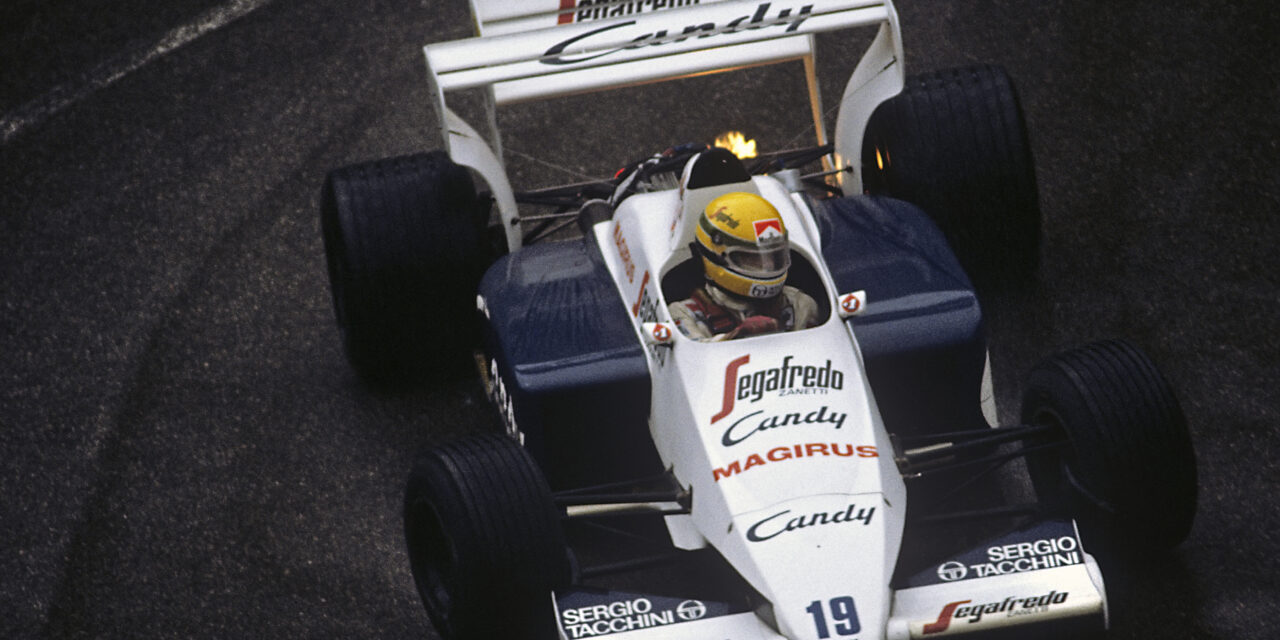
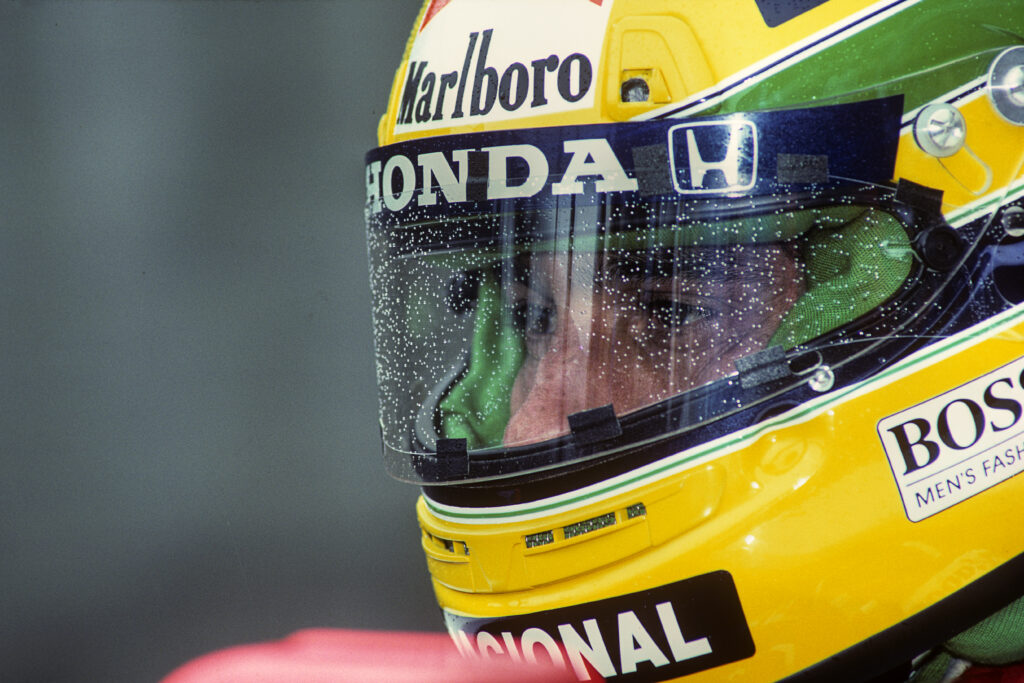
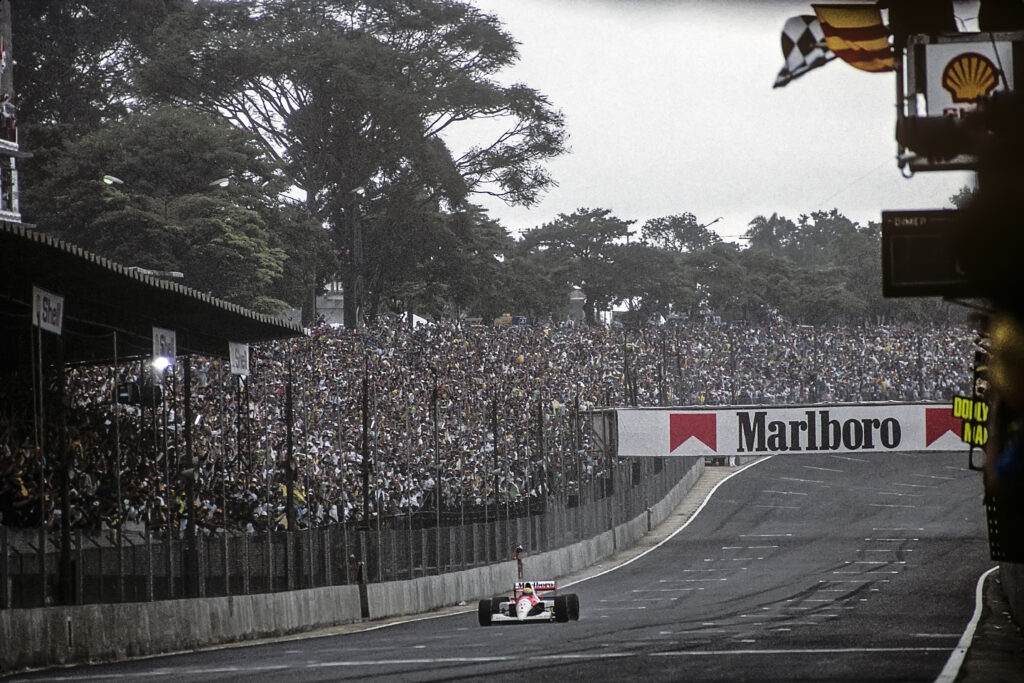
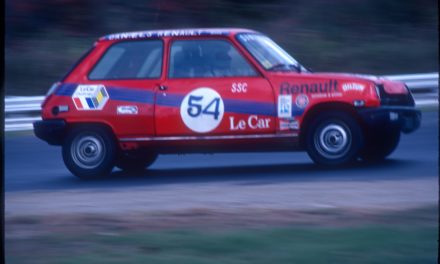
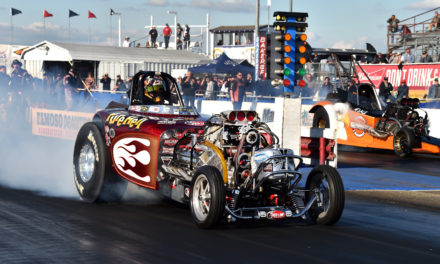
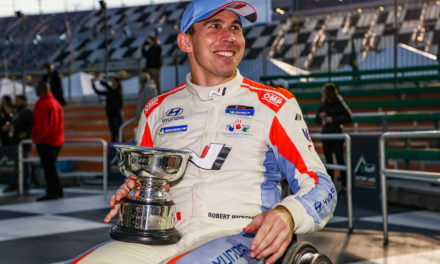
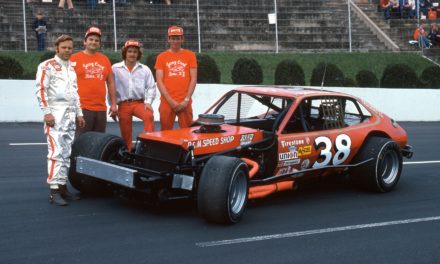





I was fortunate for two reasons to be at the Donington Grand Prix . Firstly I had been invited into one of the hospitality units which had a television screen so that I could see the entire lap and secondly Ayrton made his pass to take the lead directly in front of my unit. Truly one of the greatest laps of all time.